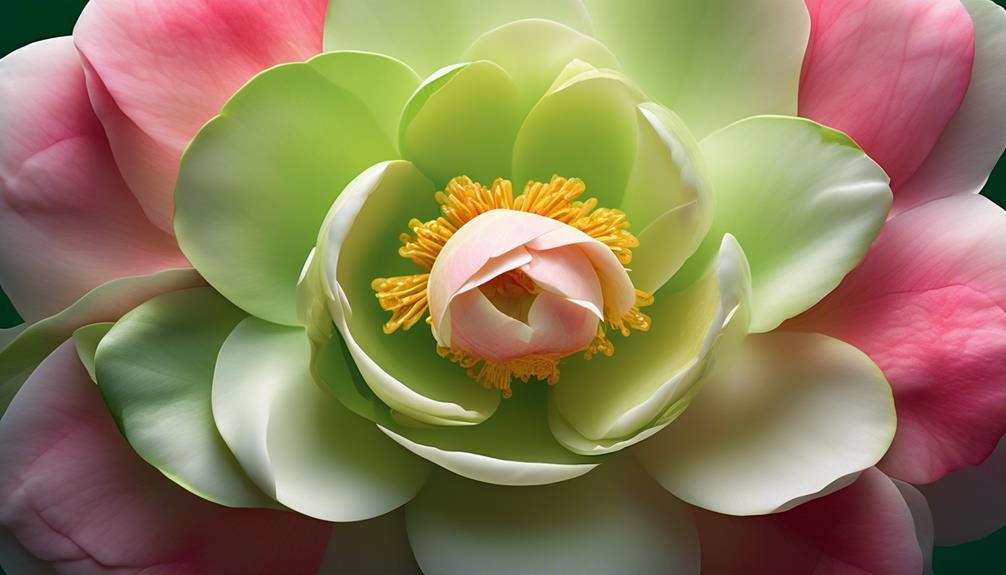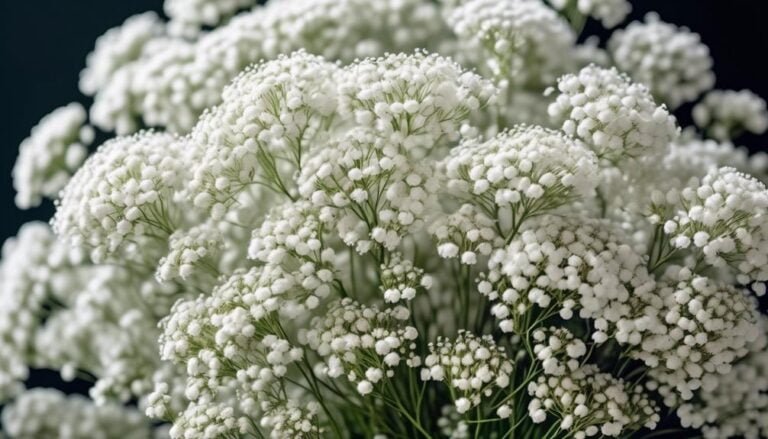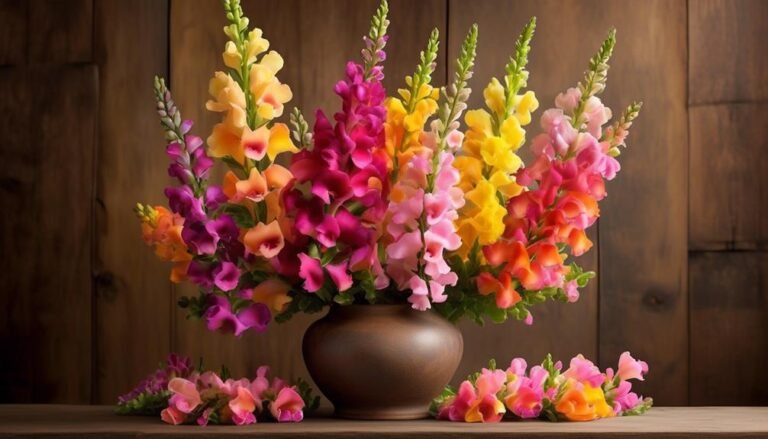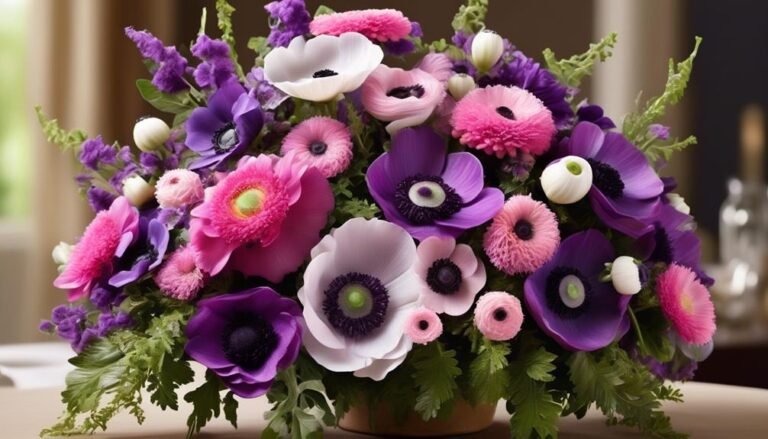Popular Types of Florist Flowers – Camellia
The Camellia, scientifically known as Camellia japonica, is a beloved flower in the world of floristry, cherished for its perfection and loveliness. Its elegant charm and diverse range of colors make it a popular choice for floral arrangements. With its historical significance and longevity, the Camellia is a must-have for any flower enthusiast.
Historical Significance:
The Camellia has a rich historical significance, especially in Eastern cultures where it is considered a symbol of love, affection, and admiration. It has been cultivated for centuries and holds a special place in traditional ceremonies and rituals.
Varieties and Characteristics:
Camellias come in a diverse range of colors, including shades of pink, red, white, and even variegated patterns. Each variety has its own unique characteristics, from the size and shape of the flowers to the texture of the petals. Some popular varieties include 'Nuccio's Pearl', 'Debutante', and 'Kramer's Supreme', each offering a distinct appeal for different floral arrangements.
Care Tips:
To ensure the longevity of Camellia flowers, it is important to provide them with the right care. They thrive in well-drained, acidic soil and prefer partial shade. Regular watering and pruning are essential for maintaining healthy Camellia plants. With proper care, these exquisite flowers can brighten up any space for an extended period.
In conclusion, the Camellia is a timeless and versatile flower that adds elegance and charm to any floral arrangement. Its historical significance, diverse varieties, and care tips make it a valuable addition to the world of floristry.
Scientific Name
The Camellia flower, scientifically known as Camellia japonica, is an evergreen shrub native to East Asia. It belongs to the Theaceae family and is well-known for its glossy, dark green leaves and large, showy flowers that come in various colors such as red, pink, and white. Another species, Camellia sinensis, is famous for its leaves being used in making tea.
Camellias require specific conditions for optimal growth. They thrive in well-drained, acidic soil with partial shade and are sensitive to direct sunlight, strong winds, and extreme temperatures. The ideal climate for Camellias is moderate, with consistent moisture and high humidity.
In Japan, the Camellia japonica symbolizes the divine and is associated with beauty, blooming in the cold season when few other flowers are in bloom. In China, it symbolizes longevity and faithfulness. These deep cultural symbolisms add to the allure and popularity of Camellias in gardens and floral arrangements.
Background History
The Camellia plant has a rich history deeply rooted in East Asia, where it holds immense cultural significance and botanical diversity.
Cultural Significance:
In countries like Japan and China, the Camellia is revered as a symbol of love, affection, and admiration. In Japan, it's known as 'Tsubaki' and is associated with divine and sacred shinto rituals. It also symbolizes the virtues of the samurai, including bravery and courage.
Symbolism and Meanings:
The Camellia symbolizes longevity, purity, and gratitude. The red Camellia signifies love and passion, the pink Camellia represents longing, and the white Camellia symbolizes adoration and perfection. It's also associated with the idea of waiting.
Botanical Diversity:
The Camellia genus encompasses around 300 species and 3,000 cultivars and hybrids, with Camellia japonica being the most prominent. It includes species like Camellia sinensis, used to produce tea, and Camellia oleifera, known for its oil-rich seeds.
Historical Significance:
Camellias have been extensively cultivated and hybridized throughout history, leading to the development of numerous ornamental varieties. Its historical significance is deeply entwined with its cultural symbolism, making it an enduring emblem of beauty, love, and reverence.
Physical Description
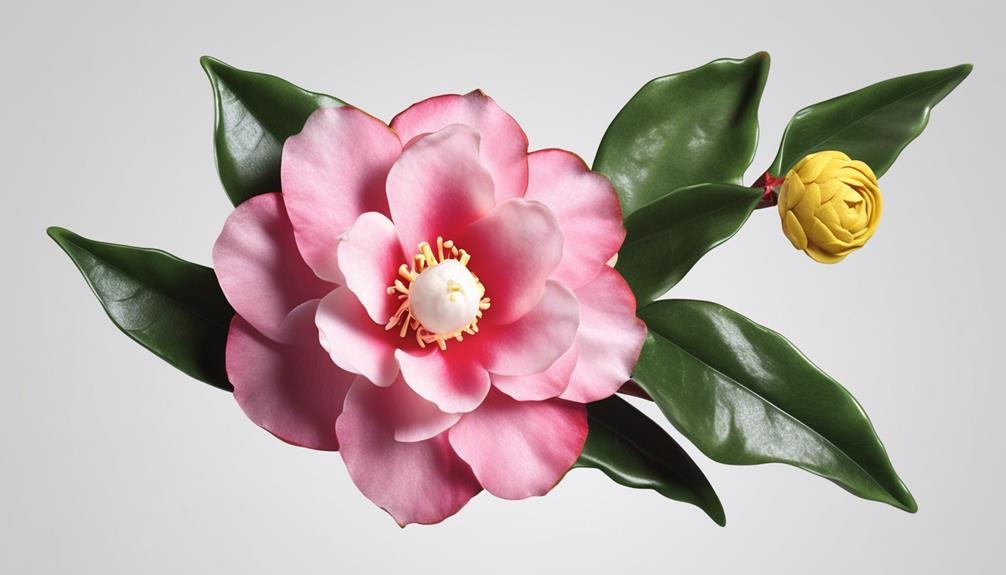
The Camellia plant comes in different species and cultivars, each with its own unique features. The Camellia japonica, known for its leathery, glossy dark green leaves, can grow up to 5-6m in height. Its showy flowers have six or seven petals and come in white or rose-red tones, with a diameter ranging from 5-12cm.
The Camellia sasanqua, native to Japan, typically grows up to 4m in height, featuring serrated glossy deep-green leaves and showy flowers with five to eight ruffled or fluted petals, with a diameter of 5-10cm.
Camellia chrysantha, a rare species native to China and Vietnam, has semi-double flowers in a unique yellow color, extending the blooming season into April.
Some notable C. japonica cultivars include 'Akashigata' with large flowers up to 12cm in diameter, 'Margaret Davis' with peony form creamy white flowers, 'Eleanor Martin Supreme' with large semi-double bicolored flowers, 'Higo Okan' known as the Camellia of the Samurai with single-form bi-colored flowers, and 'Masayoshi' with smallish and compact plants displaying unique patterns and colors.
Camellias thrive in slightly acidic, well-draining soil, and they prefer partial shade with protection from strong winds. Adequate watering and regular fertilization are crucial for the optimal growth and blooming of these exquisite flowers.
Colours and Characteristics
Camellia flowers come in a variety of colors and characteristics, making them a captivating addition to any garden or landscape.
Camellia japonica: These flowers range from pastel pink to deep rose-pink, with cultivars like 'Akashigata' and 'Margaret Davis' boasting large, semi-double flowers in striking color combinations.
Camellia sasanqua: This species offers showy flowers with five to eight ruffled or fluted petals, typically in white, adding an elegant touch to gardens and floral arrangements.
Camellia chrysantha: Known for its rare yellow semi-double flowers, this species adds a touch of exclusivity to floral displays.
- japonica 'Higo Okan': Also known as the Camellia of the Samurai, this variety features single-form flowers with a yellow central disk and snow-white petals with varying thickness of pink to scarlet edging, creating a bi-colored bordering effect that's prominent and eye-catching.
Camellia flowers hold cultural significance, often representing love, affection, and admiration. They're extensively used in floral arrangements and bouquets, adding beauty and elegance to any composition. With their diverse colors and unique characteristics, Camellia flowers offer a wide range of options for creating stunning floral displays.
Varieties Available
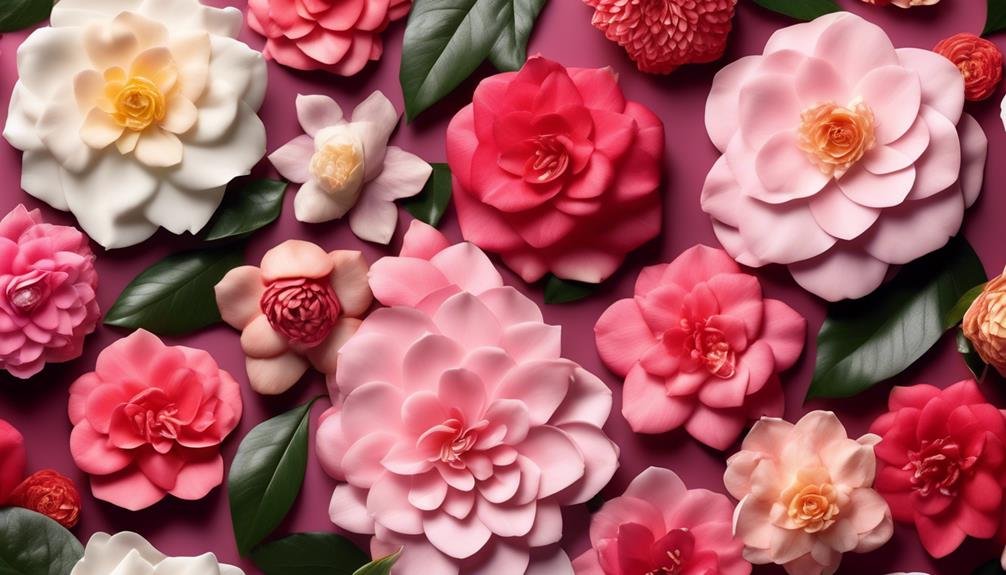
Camellia Varieties for Your Garden and Floral Designs
Discover a wide range of Camellia varieties, each offering unique flower sizes, forms, and colors, making them exceptional additions to any garden.
Camellia japonica presents a range of cultivars like 'Akashigata', 'Margaret Davis', 'Eleanor Martin Supreme', 'Higo Okan', and 'Masayoshi', featuring varying flower sizes, forms, and colors, from delicate pastel pink to striking rose-red.
Similarly, Camellia sasanqua boasts cultivars with diverse flower sizes, forms, and colors such as white with pink speckles, bright pink, and pale pink, adding visual interest to the garden.
Additionally, the rare Camellia chrysantha species offers semi-double flowers in a unique yellow color, extending the blooming season and providing an unusual element to any collection.
Other important species like C. saluenensis (Bartley Pink), C. sinensis (Chinsingganzai), and C. reticulata each offer distinct characteristics worth exploring.
In floral design, the varied Camellia varieties offer a wide range of uses in arrangements.
The larger, more showy flowers of Camellia japonica can be focal points in floral designs, adding a touch of elegance and grandeur.
On the other hand, the smaller, daintier blooms of Camellia sasanqua are perfect for delicate and intricate floral designs, bringing a sense of delicacy and charm to the arrangements.
The rare yellow blooms of Camellia chrysantha can be used to create unique and eye-catching floral displays, making them a sought-after choice for distinctive arrangements.
Additionally, the most beautiful Camellia japonica varieties like Adolphe Audusson, April Dawn, April Kiss, April Rose, and April Snow are prized for their vibrant colors and hardiness, making them exceptional choices for various types of arrangements, from bridal bouquets to centerpiece designs.
Seasonal Availability
Camellia flowers are in season during autumn, winter, and spring, with some varieties blooming as early as February and lasting until April. Their vibrant colors make them a popular choice for adding color to landscapes during the colder months.
With a lifespan of up to 100 or 200 years, Camellia plants are a long-term addition to any garden. The availability of different species and cultivars may vary based on local climate and environmental conditions, so it's important to consider their specific needs.
Understanding the seasonal availability of Camellia flowers is essential for planning and enjoying their beauty throughout the year.
Care Tips
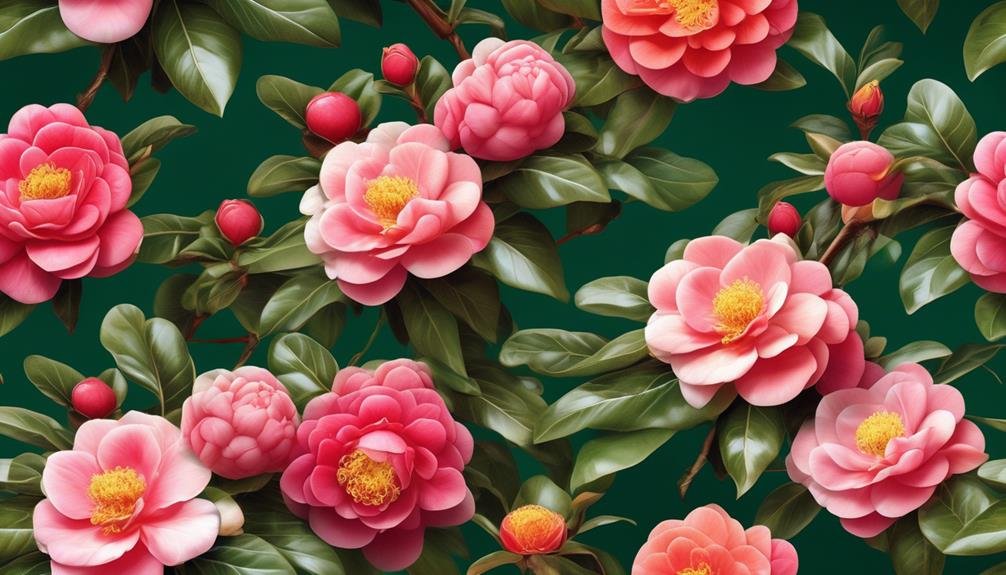
Camellias thrive in well-drained, acidic soil with a pH level of 5.5 to 6.5. Partial shade is essential to protect the plant from direct sunlight, especially during hot afternoon hours. Consistent watering to keep the soil evenly moist, without waterlogging, is crucial for optimal growth. Mulching around the base of the plant can help retain moisture and regulate soil temperature.
Regular pruning after the flowering season is important to maintain the plant's shape and remove dead or diseased branches. Proper pruning techniques involve cutting at a 45-degree angle right above a node to encourage new growth.
Camellias are susceptible to pests like aphids and spider mites, as well as diseases like root rot and leaf spot. Regular inspection and appropriate treatment are crucial in preventing and managing these issues.
What Makes Hydrangeas a Popular Choice for Florists Like Camellias?
Florists prefer popular hydrangea flowers for their versatility and beautiful blooms. Like camellias, hydrangeas come in a variety of colors and sizes, making them perfect for creating stunning arrangements. Additionally, their long vase life and ability to dry well make them a popular choice for florists.
Conclusion
Camellia japonica, commonly known as camellia, is a popular choice for florists and gardeners due to its vibrant and showy blooms, long lifespan, and ability to add color during the colder months. This versatile flower is a valuable addition to any garden or landscape. Understanding its seasonal availability and following proper care tips can help you enjoy the beauty of Camellia japonica year after year.
Its striking blooms make it a sought-after choice for floral arrangements, adding elegance and color to any occasion. With the right care, Camellia japonica can thrive and bring joy with its stunning flowers.
